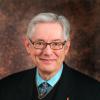
(Unsplash/Rhand McCoy)

Each of the Abrahamic faiths — Judaism, Christianity and Islam — has a mystical path. Jews call their tradition Kabbalah. Muslims have Sufism. And Christians have, well, the mystics. (Though until about the sixth century this path was known as contemplatio, a term now used for the final phase of lectio divina.)
If there's a common thread here, it's an emphasis on — and search for — a personal and direct experience of God's presence.
Simon Critchley, who teaches philosophy at the New School for Social Research in New York and has long been intrigued by mystics, tells readers what he has learned through his studies in the new book Mysticism.
Late in the book, after too many efforts to say why he wrote it, Critchley emerges with this useful phrase: Mysticism is the "fiery core and beating heart" of religion.
That's certainly more poetic and memorable than this definition offered early in the book: Mysticism is "the cultivation of practices which allow you to free yourself of your standard habits, your usual fancies and imaginings and see what is there and stand with what is there ecstatically" (italics his).
People who either call themselves mystics or who get labeled that by others are scattered across the history of religion. But Critchley limits his research primarily to Christian mystics, though his use of "Christian" is pretty flexible. Along with the usual mystic suspects, such as Julian of Norwich and Meister Eckhart, the author also finds strands of mysticism in the writings of poet T.S. Eliot and contemporary author Annie Dillard. Critchley makes a pretty good case for their inclusion, even if at one point he writes, "Eliot is not a mystic." You may find that conclusion a bit mysterious, but let it go.
Late in the book, after too many efforts to say why he wrote it, Critchley emerges with this useful phrase: Mysticism is the 'fiery core and beating heart' of religion.
As for Dillard — who first lit up the literary world with Pilgrim at Tinker Creek, for which she won a 1975 Pulitzer Prize in nonfiction — Critchley is mostly interested in her beautiful little book Holy the Firm. The writing there, he says, "oscillates between intensely observational realism and an emotive, almost hallucinatory, fictionalizing." In other words, mysticism.
Critchley quotes Dillard as saying that writers are the wick of a candle, while their words are the flame: "When the candle is burning, who looks at the wick?"
Critchley adds: "To write is to try and set yourself on fire, to seek to immolate yourself. The name, the identity, the interiority, the subjectivity of the writer or the artist is of absolutely no interest."
This statement is about writing, yes, but it goes well beyond that. It's about living a meaningful life. Critchley argues that such a life requires a fiery devotion to one's passions, one's craft, one's God. It is to lose oneself in a mystic way, similar to the idea that poet William Butler Yeats wrote of in "Among School Children": "O body swayed to music, O brightening glance / How can we know the dancer from the dance?"
Dancers, writers, pray-ers, singers, cleanup hitters, drummers will find mysticism when they experience the kind of kenotic self-effacement that the eternal Christ experienced when he crossed into humanity at birth. That kind of reckless abandonment of self is at the core of mysticism and the core of love, which at its core is self-sacrificial. That abandonment of self can open a mystical connection to the divine.
So the question that Critchley's book raises is, essentially, this: Is mysticism still of any use? Does it help anyone? Can it stand up to orthodox theological inquiry? Mostly his answer is yes. But he reminds readers that when we're dealing with mysticism, we're dealing with fire. So we must be cautious.
Advertisement
If we are to enter into the mysteries of mysticism in the 21st century, Critchley wants us to know that we will be dealing with, among much else, blood. Blood, he says, is "the ontological medium that connects humanity with divinity in a fluid unity, a flowing oneness."
And that, in turn, moves readers into the mysteries of the Eucharist and, almost by necessity, into the Aristotelian science behind the doctrine of transubstantiation.
Perhaps the change from bread to body and wine to blood would be even more mystical if the church instead could find an explanation rooted in post-Einsteinian science, including Werner Heisenberg's uncertainty principle. However, changing the current understanding of transubstantiation does not seem to be high on many to-do lists.
So Critchley focuses on blood; such as in his entry about Angela of Foligno, whose "visions culminate in her crawling into the darkness of the side wound of Christ." Clearly, mysticism isn't for the squeamish.
Because mysticism is so, well, mystical, Crutchley again and again offers different definitions of it. Perhaps one of the more helpful is this: "Mysticism is not a religion, it is a tendency, a distillation of existing devotional practice, textual interpretation, theological teaching, and conceptual, philosophical reflection."
If that seems a little stiff, return to the concept of mysticism as the "fiery core and beating heart" of religion. For if it's not that, it's more likely to be what Dillard, in Teaching a Stone to Talk, called churches: "Children playing on the floor with their chemistry sets, mixing up a batch of TNT to kill a Sunday morning."








